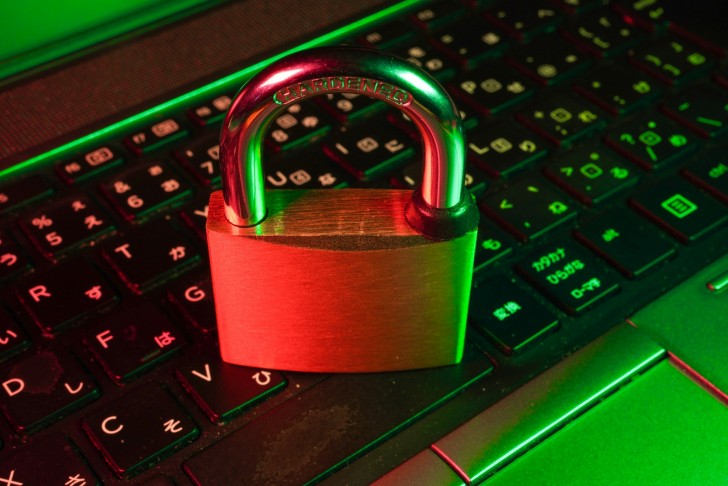The list includes communication, leisure, transportation, shopping, and healthcare domain names. Technology permeates our daily practice, from email and smartphones to navigation systems and online transactions.
Consider how much you rely on technology in your day-to-day existence. At the same time, consider the vast repository of personal records stored inside your devices or external structures. The importance of cybersecurity becomes disruptive in this context, highlighting the critical need to protect and support our digital assets against capacity threats.
Threats Arise from Poor Cybersecurity?
On the global web, there are numerous dangers, a few more extreme than others. For instance, there is the chance of harmful software wiping out the whole lot on your laptop or someone getting into your gadget and messing with your essential files. Someone could use your PC to harm others or steal your credit card info for unauthorized purchases. Even if you're careful, these things still occur now and then. But don't worry, there are steps you could take to reduce the chances of this stuff taking place.
By being conscious and taking a few precautions, you may make it less likely that you may run into those troubles. Understanding these dangers allows you to defend yourself better online and keeps your digital lifestyle more secure.
What Steps Improve Your Cybersecurity?
To stay safe, first, understand the dangers. Learn these terms to understand the risks better.
Vulnerabilities
Vulnerabilities are software, firmware, or hardware defects that an attacker can exploit to execute unauthorized operations in a system. Programming flaws in software can cause them. Attackers use these mistakes to infect systems with malware or engage in other harmful behavior.
Attacker, Invader, & Hacker
These phrases refer to those seeking to exploit software and computer system flaws for personal benefit. Although their goals are occasionally benevolent and driven by curiosity, their activities are frequently contrary to the intended usage of the systems they abuse. The outcomes can range from harmless mischief (generating a virus with no evil intent) to harmful conduct (stealing or modifying information).
Ensure Your Software is Regularly Updated
Fortify your device against cyber threats by installing software program patches. These patches fix known issues and vulnerabilities, making it harder for attackers to exploit weaknesses. Most running structures offer computerized updates; if this option is obtainable, spark off it to hold your defenses strong.
For extra insights, discuss comprehending patches and software updates with sources. Staying proactive is fundamental to bolstering your digital safety. E risks. Get to understand those terms to understand the risks better:
Malicious Code
Malicious code or software (also known as malware) is a collection of unwanted files or programs that can harm a computer or jeopardize stored data. Viruses, worms, and Trojan horses classify malicious code. (For further details, see Protecting Against Malicious Code.) Malicious code may exhibit the following traits:
- You may need to take action before it infects your machine. This activity might be as simple as opening an email attachment or visiting a certain website.
- Some malware spreads without human involvement and usually begins by exploiting a software weakness. After infecting the victim's computer, the virus will attempt to discover and infect other machines. Malware can also spread through email, websites, or network-based applications.
- Some viruses pretend to be one thing while doing something else behind the scenes. For example, a program that aims to speed up your computer may transfer personal information to a remote invader.
Use an Updated Antivirus Software
Using a straightforward antivirus device is a vital shield against known online risks. It can spot, isolate, and do away with distinct types of dangerous software programs without you wanting to do lots. Turn on automatic virus definition updates to protect your shield against the most recent threats.
However, even a satisfactory antivirus software program may leave out new and complicated threats like zero-day exploits or form-shifting viruses as they appear for recognized patterns.
Choose Strong, Hard-to-guess Passwords
Choose passwords that are difficult to guess for attackers, and use separate passwords for various programs and devices. Using lengthy, strong passwords or passphrases with at least 16 characters is preferable. (See Password Selection and Protection.)
Swap Out Default Usernames and Passwords
Bad guys can easily find default usernames and passwords. Change them quickly to a strong and one-of-a-type password to hold your stuff safe.
Set up a Firewall
Firewalls prevent certain attacks by blocking harmful site visitors from entering your laptop. Some device systems have their very own firewalls built-in. Follow the device or gadget owner's guide to turn on and install the firewall nicely. For greater guidance, look at resources for firewalls for domestic and small workplace use.
Enable MFA for Added Security
Authentication verifies a user's identification, but vulnerable methods may be easy prey for attackers. MFA, or Multi-Factor Authentication, guarantees protection by requiring at least identification assessments. This way, although a person is aware of your username and password, it is more difficult for them to interrupt. For greater information, explore the idea of reinforcing passwords with additional layers of safety.
Exercise Caution Emails You Didn't Expect
Phishing emails pose a major danger to regular customers, aiming to gather your records, take your money, or infect your tool with malware. Stay careful with any unexpected emails that pop up. For greater guidance, check sources on guidance clean of social engineering and phishing attacks.
Conclusion
In today's tech world, cybersecurity keeps our stuff safe from sneaky online risks. It's like a shield for our gadgets and information, protecting them from awful men who try to sneak in or mess matters up. From updating software to the use of robust passwords and being cautious with unexpected emails, there are steps we can take to live safely. It's now pretty much not having antivirus software; it's approximately being clever and staying one step ahead of the cyber troublemakers.
 Editorial staff
Editorial staff

 Editorial staff
Editorial staff


